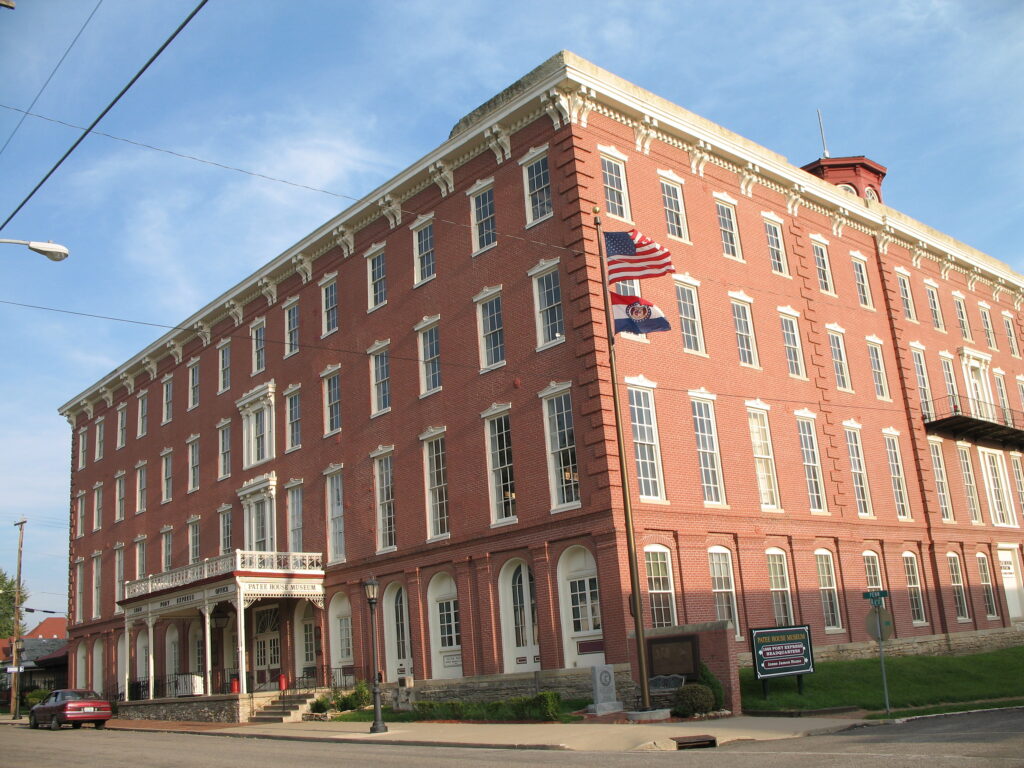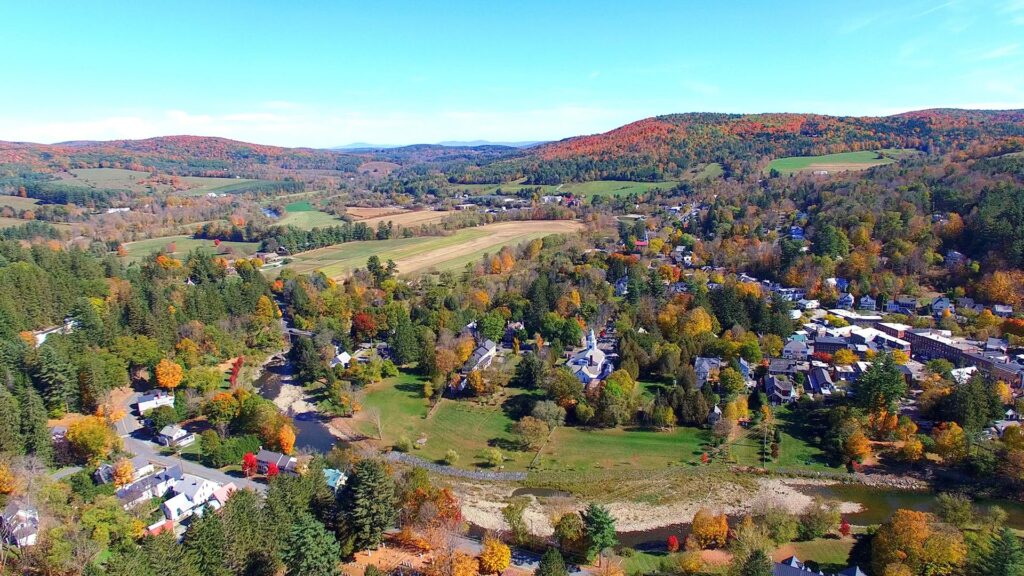1. Breakfast Casserole
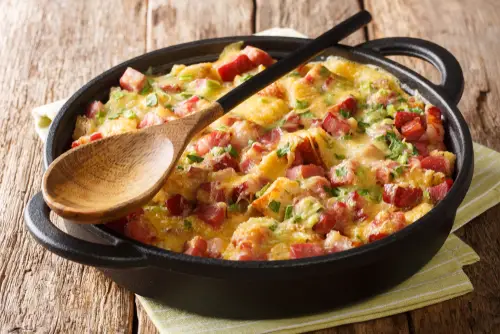
By the 1970s, casseroles even made their way to the breakfast table. Sausage, eggs, cheese, and bread baked together became the standard for brunches and potlucks. It was the kind of dish you could make ahead, bake the next morning, and feed an army. The appeal was convenience, not cholesterol.
The mix of pork sausage and cheddar made it a morning heart attack waiting to happen, but that didn’t stop anyone. It was hearty, filling, and perfectly in line with America’s love of big breakfasts. The 1970s diet craze hadn’t hit yet, so butter and eggs were still heroes. And honestly, no one wanted to hear otherwise.
2. Green Bean Casserole
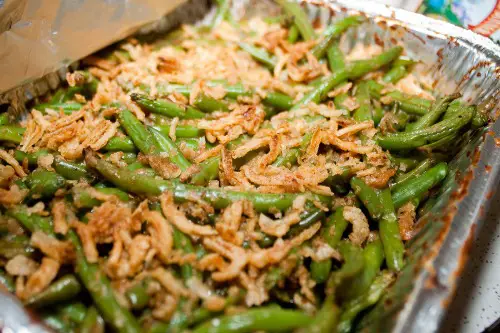
The green bean casserole was literally invented in 1955 by Campbell Soup’s test kitchen to sell more cream of mushroom soup. It combined canned green beans, canned soup, and fried onions from a can—a hat trick of postwar convenience. The dish was designed to be easy enough for busy mothers to make for Thanksgiving. And boy, did it work—it’s still on holiday tables nearly 70 years later.
It wasn’t until much later that Americans realized those fried onions packed as much saturated fat as a small steak. But in the 1950s and ‘60s, no one cared. People were just proud to serve something “modern.” Plus, it looked fancy next to Jell-O salad.
3. Chicken and Rice Casserole
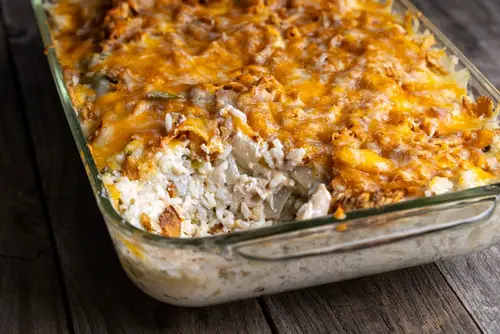
This classic casserole took off when canned soups and instant rice hit supermarket shelves. A can of cream of chicken soup could transform a few chicken thighs into a family feast. The mix baked into a bubbly, creamy dish that could feed a crowd with minimal effort. It was the ultimate “set it and forget it” dinner before slow cookers took over.
In hindsight, the sodium levels were astronomical, and the white rice added little nutrition. But in the 1960s, it was considered wholesome home cooking. It combined the comfort of homemade meals with the convenience of modern ingredients. And besides, nobody in that era was counting carbs.
4. Cheeseburger Casserole
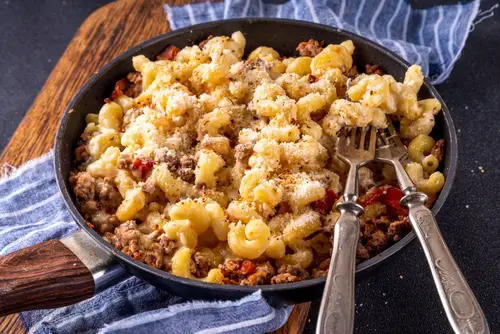
When America fell in love with fast food in the 1950s, it didn’t take long for home cooks to bring that flavor to the casserole dish. Enter cheeseburger casserole: ground beef, cheese, noodles, ketchup, and sometimes pickles. It was like a burger, fries, and milkshake had merged into one glorious, greasy bake. It was especially popular with kids and picky eaters.
Of course, all that cheddar and beef fat didn’t exactly make for a heart-healthy meal. But no one was worried about LDL cholesterol yet. Parents just wanted something hearty and affordable that their kids would actually eat. It was suburban comfort food at its finest.
5. King Ranch Casserole
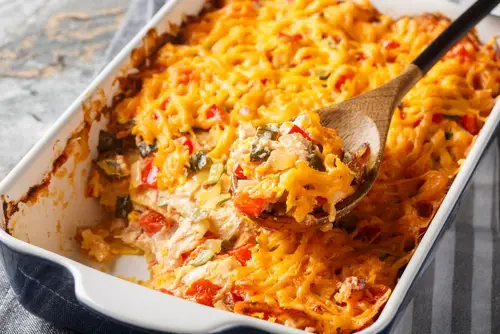
A Texas favorite, King Ranch casserole dates back to the 1940s and blends Tex-Mex flavors with creamy casserole traditions. It layers tortillas, chicken, Ro-Tel tomatoes, and—you guessed it—cream of mushroom soup. The combination was spicy, rich, and distinctly Southern. For many Texans, it became the go-to potluck dish.
It’s often called the state’s unofficial casserole, which makes sense since it reflects Texas’s love affair with both comfort food and spice. The problem? It was basically a sodium bomb with dairy on top. Still, it’s hard to hate a dish that brings the heat and nostalgia in equal measure.
6. Ham and Potato Casserole
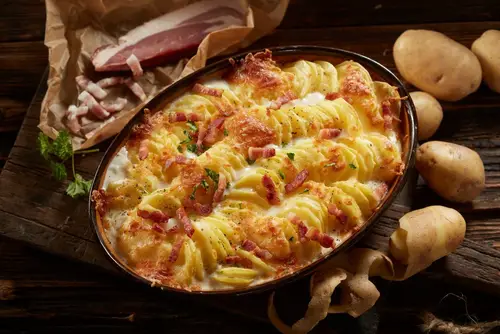
After Easter or Christmas, there was always leftover ham, and thrifty homemakers knew just what to do with it. Diced ham mixed with potatoes, cheese, and condensed soup made for a stick-to-your-ribs meal. It was a true waste-not comfort food. Plus, it could stretch one ham for days.
Potatoes were cheap, ham was flavorful, and cheese made everything taste better. The result: a creamy, starchy, salty classic that could survive the freezer or feed the whole neighborhood. No one was concerned about cholesterol when the biggest worry was whether the Jell-O mold had set. It was practicality and indulgence all in one dish.
7. Beef Stroganoff Casserole
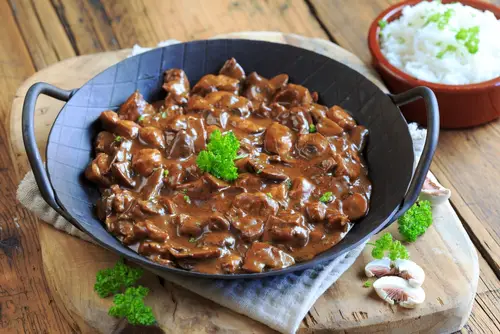
Inspired by the Russian dish but thoroughly Americanized, this version relied on ground beef, sour cream, and egg noodles. The “casserole” version simplified things—no fancy cuts of beef, just what was in the freezer. Add some canned mushrooms and you had an instant weeknight meal. It was hearty, rich, and felt downright continental.
The original stroganoff used tenderloin, but most home cooks went for whatever was cheapest. The sour cream made it tangy and irresistible but also loaded it with saturated fat. It was a dish born in a time when butter and cream were symbols of abundance, not warning labels. Americans embraced it without a second thought.
8. Shepherd’s Pie (American Style)
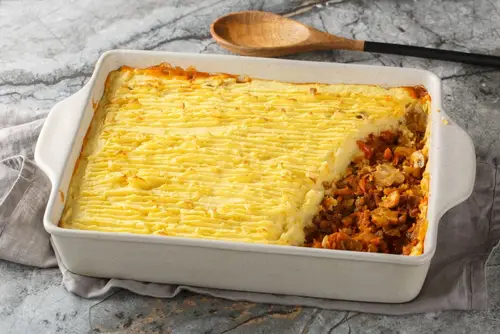
The American version of shepherd’s pie was less about lamb and more about whatever ground meat was handy. Leftover roast beef, peas, and mashed potatoes were layered into a baking dish and topped with more butter than anyone would admit. It became a staple in midcentury households looking to use up leftovers. The idea was thrift, but the execution was indulgence.
Butter, cream, and meat fat made it a calorie bomb in disguise. Still, no one counted calories when the family came together for a hot meal. It was filling, frugal, and familiar—all the things 1950s cooking celebrated. The “cholesterol” conversation was still decades away.
9. Scalloped Potatoes and Ham

This dish was the definition of Midwestern comfort food. Layers of thinly sliced potatoes baked in a cream sauce with ham bits and cheese created a golden, bubbling masterpiece. It was usually served at church suppers and holiday gatherings. And it was one of those dishes that tasted even better the next day.
The sauce, often made with butter, flour, and milk, was deceptively rich. Each forkful delivered equal parts nostalgia and sodium. It was more indulgence than nutrition, but nobody cared as long as it browned perfectly on top. The crispy edges were worth every future doctor’s lecture.
10. Tamale Pie
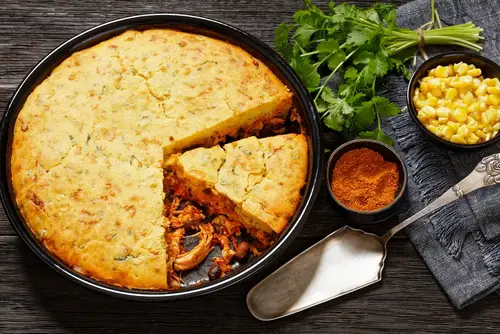
Born in the early 20th century but peaking midcentury, tamale pie was America’s friendly take on Mexican cuisine. Cornmeal crust, ground beef, and chili-seasoned tomatoes made it both affordable and exotic. It fit right into the casserole canon—one-dish, easy, and comforting. Home cooks loved its “south of the border” flair without any actual masa-making involved.
But tamale pie’s cheesy toppings and fatty fillings didn’t do any favors for arteries. It was heavy, greasy, and deliciously spicy. In the 1950s and ‘60s, though, it felt adventurous rather than unhealthy. It was international cuisine, simplified for the American oven.
11. Macaroni and Cheese Bake
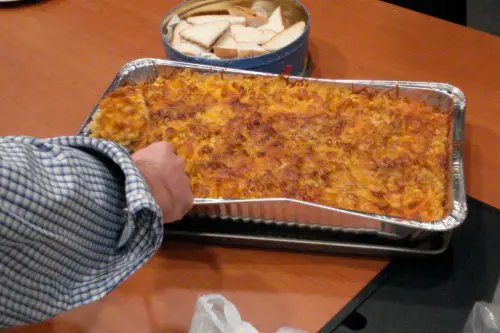
Mac and cheese wasn’t new, but baking it into a casserole took it from stovetop side to dinner-table centerpiece. With Velveeta or canned cheese sauce, it was easy to prepare and guaranteed to please. The baked crust gave it that satisfying crunch while the inside stayed gooey and rich. It became a go-to for families and cafeterias alike.
This was comfort food distilled to its purest, most decadent form. The processed cheese may have been shelf-stable, but it was also full of salt and fat. In those days, though, “processed” meant “modern.” And modern was always better—or so people thought.
12. Tuna Noodle Casserole
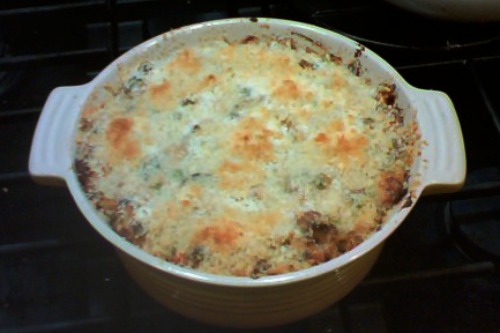
Tuna noodle casserole first gained popularity in the 1950s, when canned soup and pasta became staples of the postwar American pantry. It was cheap, filling, and could feed a family of five with just a can of tuna, a can of cream of mushroom soup, and some egg noodles. Housewives loved it because it was easy and didn’t require a trip to the butcher. The result was a salty, creamy, beige masterpiece that made nutritionists cringe decades later.
By the 1970s, this dish was appearing in every community cookbook, from church fundraisers to PTA recipe swaps. Its reliance on canned goods and sodium-heavy ingredients made it emblematic of midcentury convenience culture. Few questioned what was actually in that “cream of” soup, because it tasted like comfort. And back then, “heart-healthy” wasn’t exactly a buzzword.
This post 12 Casseroles Americans Ate for a Decade Before Learning What Cholesterol Was was first published on American Charm.

